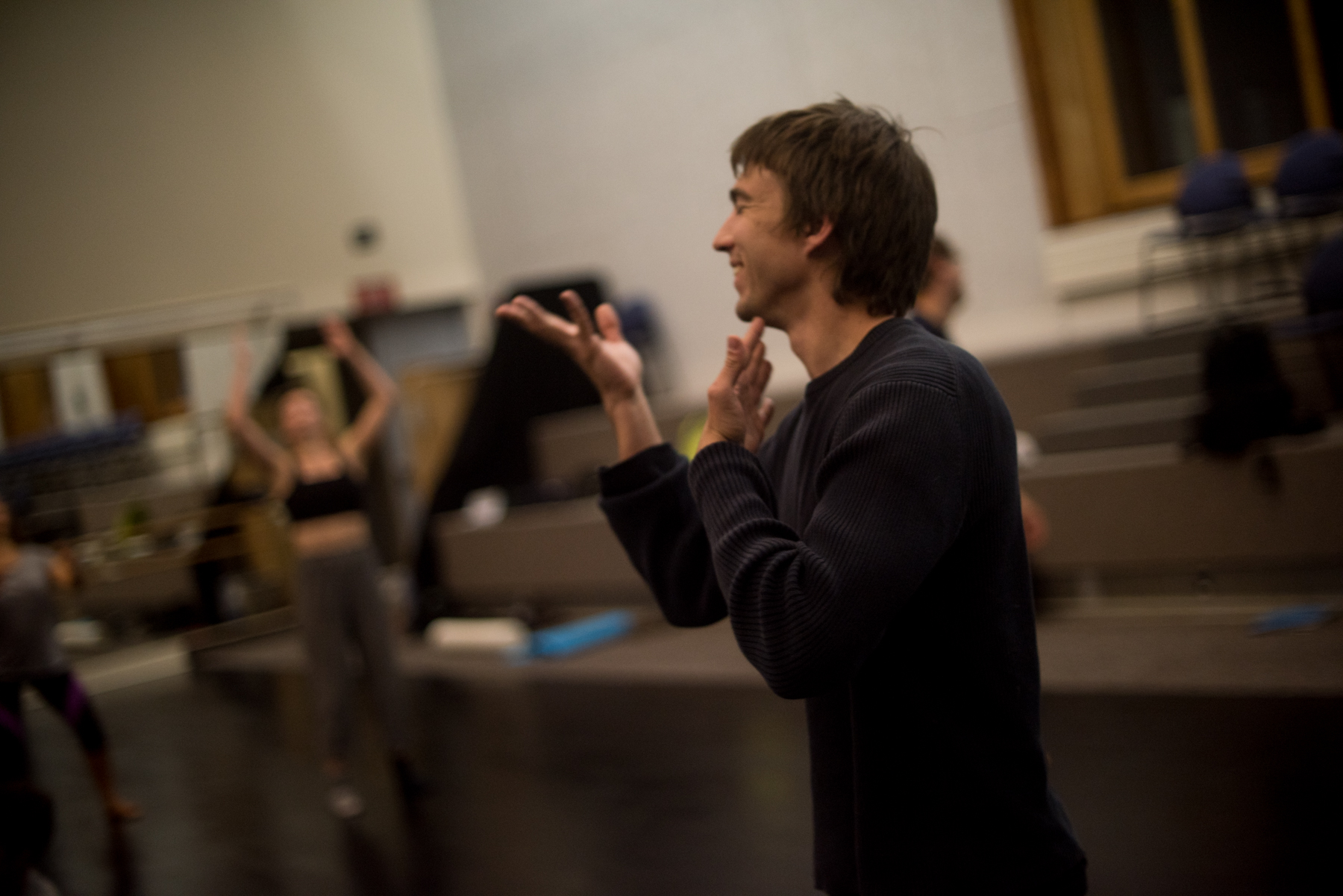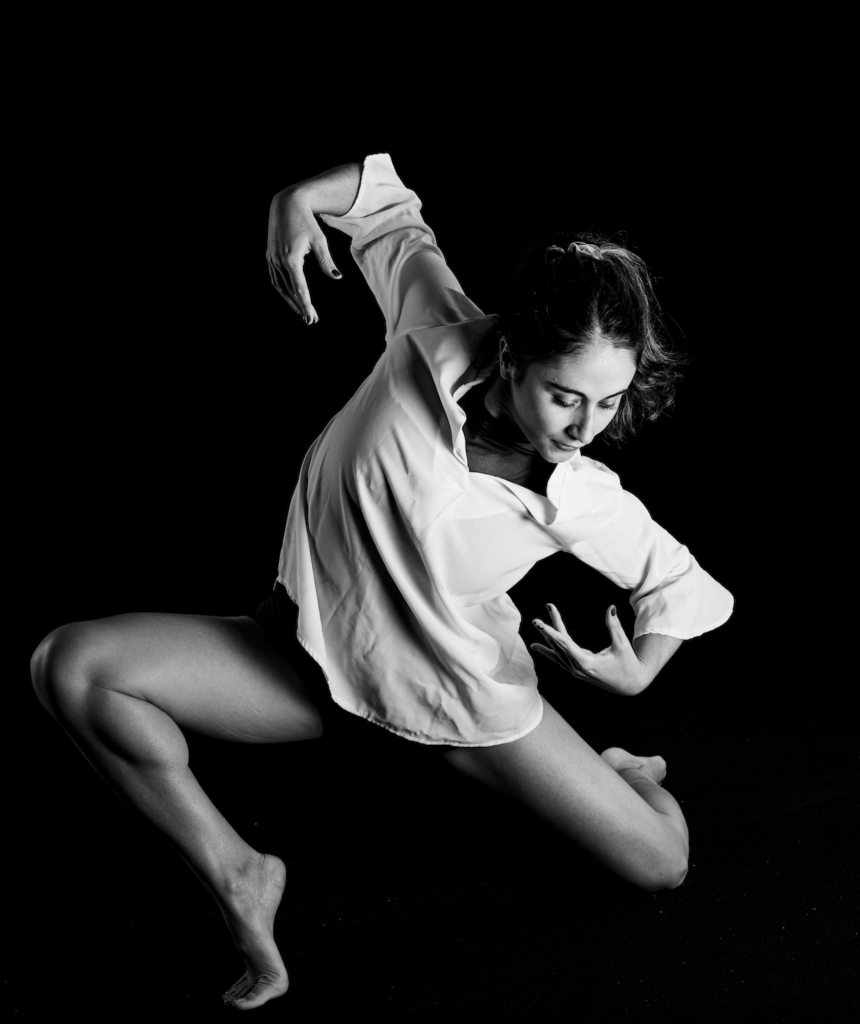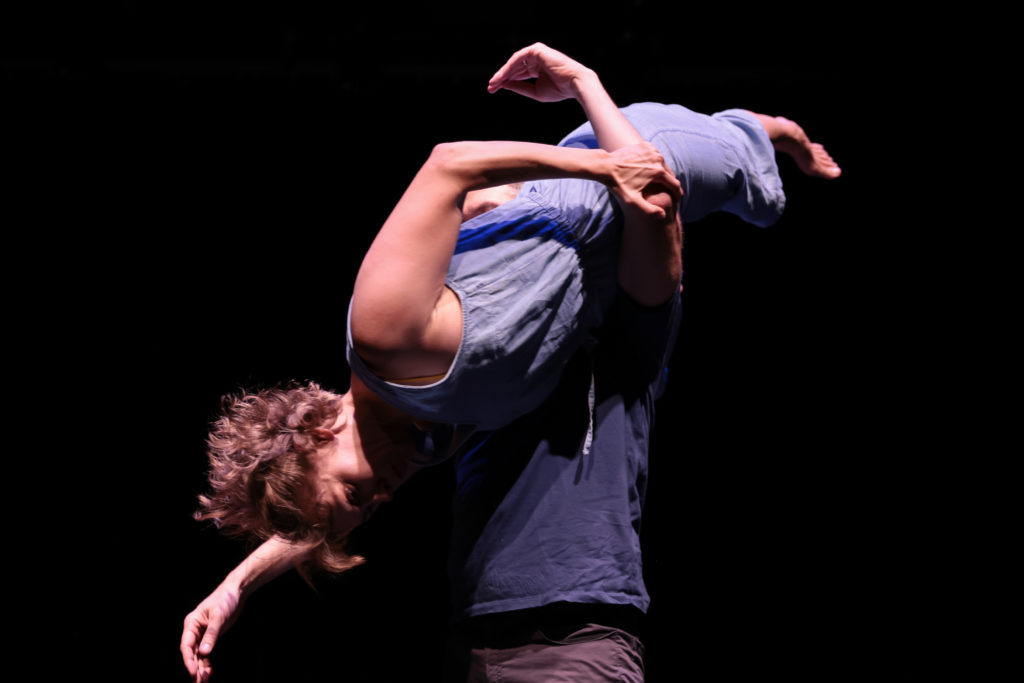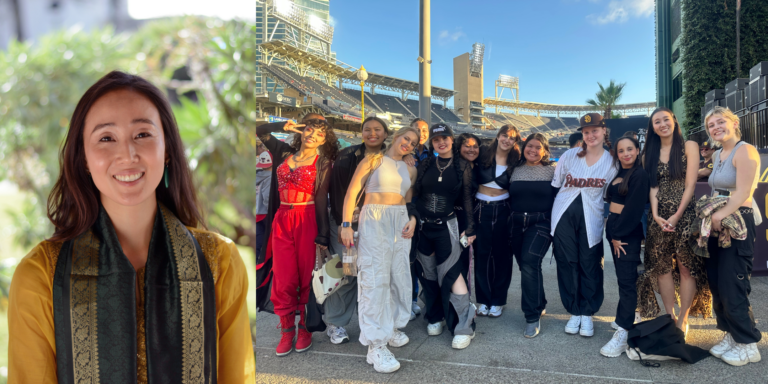
For the aspiring dance professor, the master of fine arts in dance is a baseline hiring requirement. MFAs are also terminal degrees, meaning they’re the highest possible degree offered in fine arts at universities around the world. The achievement launches many candidates not just into academia but also into careers in choreography, performance, arts administration and teaching in K–12 settings.
Though each program varies, any MFA track will guarantee its participants a deep inquiry into dance on a physical and theoretical level. But after graduation, where exactly does all that inquiry pay off? Dance Teacher asked three current teachers who received an MFA within the past decade what they’ve gained from their experiences at three different universities.
Scotty Hardwig, MFA in modern dance, University of Utah, 2014
Assistant professor in Movement, Performance and Integrated Media, Virginia Tech School of Performing Arts
When I was doing my graduate degree, I wasn’t planning on working in academia after I was finished, but in retrospect I should have known. A lot of the doors that open for artists in the U.S. are in academia. It’s where a lot of the jobs and opportunities are. Even my first gig out of graduate school was an artist-in-residence position at the University of Vermont. Because of my MFA, those doors have opened for me throughout my career.
The Utah MFA program is fabulous. It was a lot of work, but I had a really good time there. I had an assistantship and I was able to teach a variety of classes. During my third year, I received a grant to develop an experimental performance course for the undergraduate program. There were many opportunities to be teaching and thinking about teaching, which was so invaluable.
The state of higher education right now is turbulent. I would recommend only applying to programs that can provide full assistantships or some form of salary or tuition coverage. It’s a huge economic investment, and there’s not necessarily the promise of going into a professorship afterwards. I think as a field it’s time we start reimagining ways to be a dance artist. What it means to be a choreographer and a dance artist is changing. Answers to those questions may come through academia, but it may be something to imagine separately.
Andrea Salazar, MFA in dance (performance and choreography), Mills College, 2019
San Francisco Bay Area–based teacher, choreographer and performer

Where I come from in Chile, you usually see the same thing in the dance community. It’s good, but it’s small. I wanted to learn more and dive deeper. My MFA expanded my scope of what dance is beyond what I was used to, having been very studio- and technique-based. I want to be a close and warm teacher, with a welcoming spirit and always open to learn from my students’ perspective and experiences with a student-centered pedagogical philosophy.
For my career, the MFA was the starting point for everything. When I came here, I didn’t know anybody. I had such a good time and had strong bonds with both my classmates and teachers. My mentors at Mills were my references for my first job applications. They introduced me to great organizations and people that expanded my knowledge of the dance community here in the Bay Area. Also, my own dance company, A Pulso Dance Project, which I created two years ago, is mainly made up of wonderful friends and incredible artists I met at Mills during my last year.
It was a lot of work, but I think I was so eager and ready, and I really wanted to dive into a lot of training and exploration. It definitely changed and challenged my understanding of dance. I would say to all those dancers and teachers considering an MFA, look for a place where you feel comfortable, valued and respected, where you’ll get to expand on what you want to do and not be stuck in one technique. There are a lot of programs in the country that are really open in those ways. Find a space where you feel you’re going to expand and grow.
Lily Sloan, MFA in dance, Texas Woman’s University, 2010
Co-artistic director of Big Rig Dance Collective; Dallas/Fort Worth–based adjunct professor; performer and choreographer
At TWU there is a strong foundation in feminist pedagogy, both in how many of the professors work and create curriculum and in the pedagogical theory that we were learning. I feel like my eyes were opened to creating classroom environments that were more about setting up a framework for students to learn—being a facilitator rather than having a top-down instructional perspective. There was a strong emphasis on collaboration, inquiry and student-centered based learning and reflective assignments. Part of that had to do with the natural way that improvisation was sewn into the curriculum.

One unexpected advantage to getting an MFA was that I also had a good pedagogical training in online teaching. Having those skills, especially in the dance world, gave me some skills that proved invaluable when the pandemic arrived.
For me, the experience of completing my MFA opened up my connections and networks, and, more broadly, the spectrum of how varied a dance profession can be. Higher education is shifting in some ways. Today there is a lot of hiring of adjunct positions. But know that that’s not the only pathway. I’m inspired by people who are combining their interests in and outside the dance world. There are so many possibilities.



